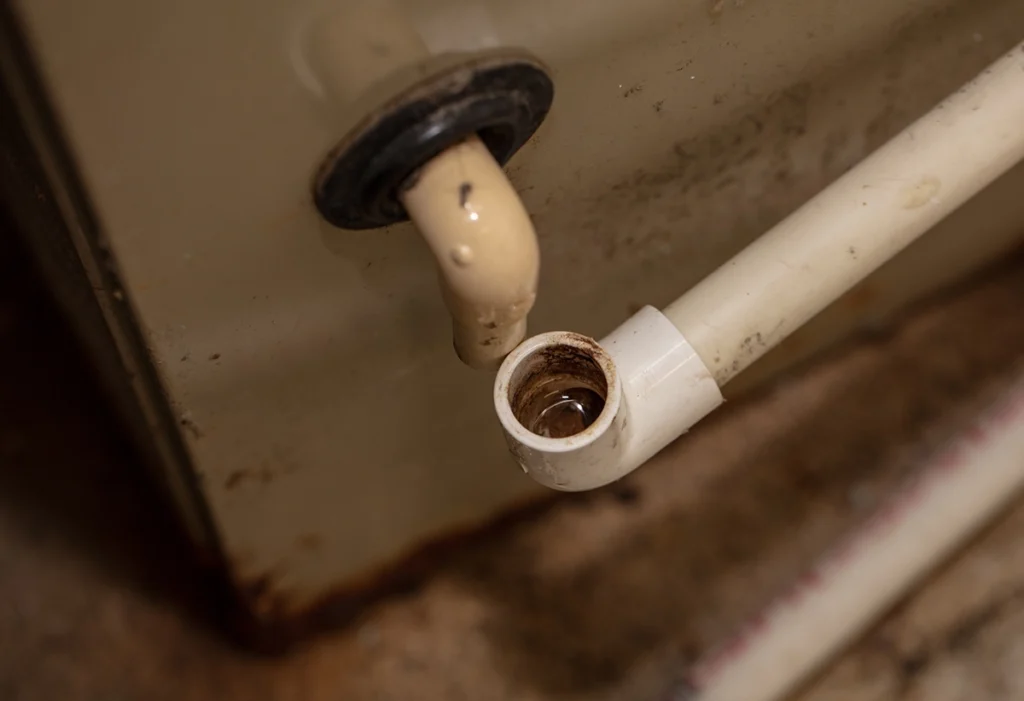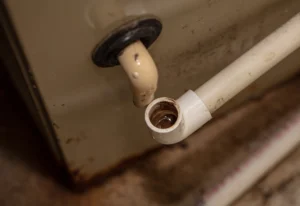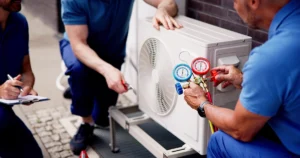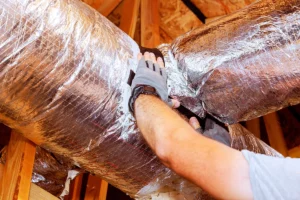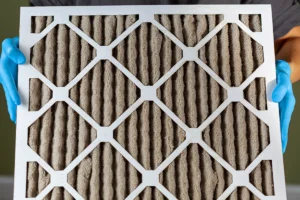When your air conditioner stops draining properly, you could be just hours away from leaks, mold, or even system damage. Knowing how to unclog AC drain line issues can save you from costly repairs — and a whole lot of frustration. In my experience, it’s one of those maintenance tasks that homeowners often overlook until it’s too late.
Below, I’ll walk you through the causes, the step-by-step process, and some prevention tips so you can keep your system running smoothly year-round.
How to Unclog AC Drain Line and Why It Matters
Your AC’s drain line removes condensation created during the cooling process. Over time, dirt, algae, and debris build up inside the pipe. Left unchecked, this can block water flow entirely.
When the line clogs, water backs up into the drain pan — and eventually into your home. That’s when you see ceiling stains, mold growth, or puddles near your indoor unit.
According to Energy.gov, regular AC maintenance, including drain line cleaning, is key to preventing moisture damage.
How to Unclog AC Drain Line: Step-by-Step
Let’s get to the main question — how to unclog an AC drain line safely and effectively.
1. Turn Off Your System
First, shut off power at the thermostat and breaker. This keeps you safe and prevents more water from flowing into the line during cleaning.
2. Locate the Drain Line Access Point
Most systems have a PVC pipe near the indoor air handler with a small T-shaped cap. Remove the cap to access the line.
3. Inspect for Visible Debris
Shine a flashlight into the opening. Sometimes you’ll see algae or dirt right at the entrance. Use gloves to remove any loose buildup you can reach.
4. Flush With Vinegar
Pour about a cup of white vinegar into the line. Let it sit for 30 minutes to break down organic growth. Avoid bleach — it can damage components over time.
5. Use a Wet/Dry Vacuum
Go outside to where the drain line exits near your condenser unit. Attach a wet/dry vacuum to the end of the pipe, seal it with a cloth, and run it for one to two minutes. You might be surprised at the gunk it pulls out.
When to Call a Professional
While many clogs are easy to clear, some are stubborn or linked to bigger issues, like a damaged drain pan or collapsed pipe. In those cases, professional tools — such as compressed air or high-pressure flushing — can restore full function without risking damage.
The EPA also warns that mold cleanup should be handled carefully to avoid spreading spores indoors.
Preventing Future Clogs
Learning how to unclog your AC drain line is important, but prevention is even better.
-
Schedule annual AC maintenance — A technician can flush your drain line as part of a tune-up.
-
Pour vinegar quarterly — This helps keep algae from taking hold.
-
Change your air filter regularly — Less dust in the system means less buildup in the drain.
-
Keep the area clean — Dirt and debris near your indoor unit can make their way into the line.
Signs Your AC Drain Line Is Clogged
Catch problems early by watching for these symptoms:
-
Water pooling near your indoor unit
-
Musty smells coming from vents
-
AC shutting off unexpectedly
-
Higher indoor humidity levels
If you notice any of these, it’s time to check your drain line before damage spreads.
Final Thoughts on How to Unclog an AC Drain Line
Knowing how to unclog an AC drain line problems can protect your home from water damage, mold, and costly HVAC repairs. It’s a straightforward process you can handle yourself in most cases — but don’t hesitate to call a professional if the clog persists or you see signs of system damage.
At Sub Zero Temp Control, we’ve helped many homeowners keep their cooling systems running smoothly year after year. And if you’re here in Vancouver, WA, or the surrounding areas, our team can handle the job quickly and safely. Whether it’s a simple clog or a deeper AC issue, we’ll make sure your system is draining like it should. Contact us today.


